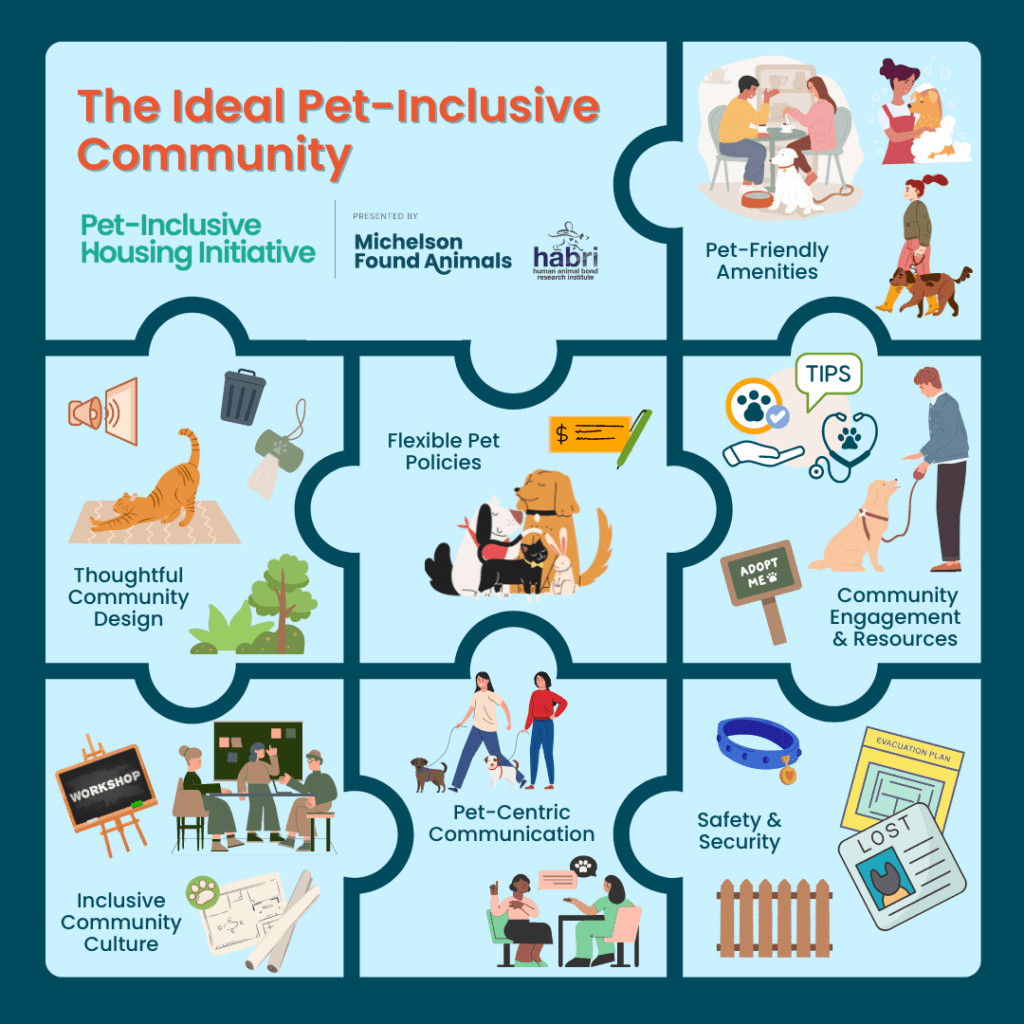Multifamily Blogs
Where Pets Thrive: Crafting the Ideal Pet-Inclusive Apartment Community
Where Pets Thrive: Crafting the Ideal Pet-Inclusive Apartment Community
How to attract renters by embracing their companion animals:
Today's renter is many things . . . demographically diverse, often working remotely, seeking social interaction and quite value-conscious. And importantly, increasingly prioritizing spaces that accommodate their lifestyle—including the companionship of pets. With two-thirds of U.S. households containing pets, chances are that many people considering your community as their next home will have a companion animal. So how can rental housing operators maximize their appeal to this group and create ideal pet-inclusive communities?
The Ideal Pet-Inclusive Community
First, an ideal pet-inclusive community goes beyond merely accepting pets; it creates a vibrant, safe, and welcoming space for all types of companion animals and their owners. Such communities recognize the deep bond between pets and residents, offering thoughtful amenities and policies that make life easier and more enjoyable for everyone involved—furry friends included. From innovative pet-centric amenities to forward-thinking community engagement, a pet-inclusive apartment can truly stand out by prioritizing the needs of pets and pet owners alike.
1. Pet-Friendly Amenities- Pet Parks and Play Areas: Fenced, safe spaces where dogs can exercise and socialize off-leash; and a cool catio for feline friends.
- Pet Wash Stations: Dedicated areas with grooming tables and wash stations for easy pet care (ideally separate rooms for dogs and cats).
- Pet Walking Trails: Well-maintained trails or pathways for residents to walk their pets.
- Pet-Friendly Common Areas: Designated spaces within the community where pets are welcome, such as outdoor lounges or patios.
- Pet-Safe Landscaping: Use of non-toxic plants, pet-safe pesticides, and secure fencing.
- Waste Disposal Stations: Conveniently placed waste stations with bags and bins to encourage cleanliness.
- Noise Reduction Features: Insulated walls and soundproofing to minimize noise between units, especially beneficial in multi-pet households.
- Sustainable, Pet-proof Flooring: Durable, scratch-resistant, easy-to-clean flooring that stands up to wear and tear from pets.
- No Breed or Size Restrictions: Welcoming all types of pets with a focus on clear pet ownership expectations rather than arbitrary breed or size bans.
- Reasonable Pet Fees: Transparent, fair, and non-excessive pet fees that do not feel punitive.
- Pet Events and Meetups: Hosting events like "Yappy Hours," pet adoption days, or training workshops to build a sense of community.
- Pet Care Services: Partnerships with local pet services like dog walkers, trainers, or pet sitters, with exclusive discounts for residents.
- Pet Resource Center: On-site or digital access to information on local vets, pet care tips, and nearby pet-friendly businesses.
- Secure Fencing and Gates: To prevent pets from wandering off, especially in off-leash areas.
- Emergency Preparedness: Clear plans for pet evacuation during emergencies, including designated safe areas.
- Lost Pet Recovery Plan: All pets should be registered upon move-in with identification details and a lost pet protocol established should a beloved pet go missing.
- Pet Introductions: Encouraging responsible introductions of pets within the community to minimize conflicts.
- Open Dialogue with Management: A responsive team that addresses pet-related concerns promptly and professionally.
- Resident Education: Workshops or informational sessions on pet etiquette, training, and behavior.
- Pet-Inclusive Policies for New Developments: Integrating pet considerations from the ground up in new building designs and amenities.
Pawing Through Final Thoughts
Creating a pet-inclusive community isn't just about offering the basics like allowing pets or designating pet-friendly areas. It's about crafting an environment that fosters a sense of belonging for both residents and their pets. By focusing on thoughtful amenities, flexible policies, community engagement, and safety measures, apartment communities can set themselves apart as leaders in pet inclusivity. And while not all operators will have the budget to incorporate every potential fancy amenity, remember that adjusting policies and communication to create a more pet-inclusive culture is 90% of the assignment. When pets are treated as part of the community, everyone benefits—creating not just a place to live, but a place to thrive together.
For more information on becoming pet-inclusive and to see how your community stacks up, check out the Pet-Inclusive Scorecard at petsandhousing.org.



